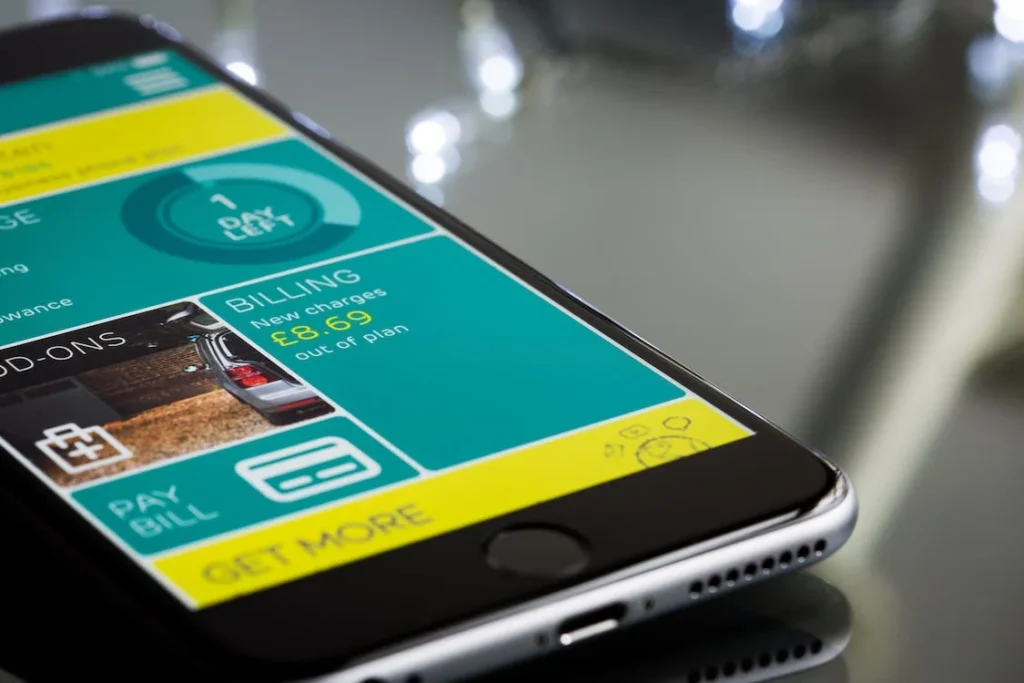(This Article has been revised, edited and added to, by Poulomi Chakraborty.)
- Defining a Landing Page
- Crafting Engaging Content: Speak to the User
- Call-to-Action (CTA): Making It Irresistible
- Building Trust: Social Proof and Testimonials
- SEO Considerations: Technical Aspects
- Leveraging Analytics and Feedback
- Internal Linking for SEO and User Journey
- Wrapping it Up
The digital era has presented numerous opportunities for Software as a Service (SaaS) businesses, but with opportunity comes competition. Having an online presence isn’t enough; ensuring your landing page is both SEO optimized and designed for conversion is crucial. Here’s a comprehensive guide to achieving both goals.
Before diving into optimization strategies, let’s clarify what a landing page is and why it’s so crucial for SaaS platforms.
Defining a Landing Page

In the realm of digital marketing, particularly for Software as a Service (SaaS) companies, understanding and leveraging the power of a landing page can significantly impact your startup’s growth trajectory. This section delves deeper into defining a landing page, emphasizing its strategic importance and offering actionable advice to optimize this crucial asset.
The Essence of a Landing Page in the SaaS Ecosystem
A landing page is not just any web page; it’s a specialized tool designed with a singular focus—to guide visitors towards a specific action, such as signing up for a free trial, subscribing to a newsletter, or requesting a product demo. For SaaS startups, this means creating a highly focused environment free from distractions, one that funnels potential customers toward making a commitment.
Strategic Planning: The Foundation of Effective Landing Pages
The creation of a landing page begins long before any design or content development. It starts with strategic planning. Understanding the end goal of your landing page is paramount. Are you aiming to increase sign-ups, promote a new feature, or gather user feedback? Each objective requires a different approach, tailoring the user’s journey to lead them to your desired outcome seamlessly.
Understanding the Buyer’s Journey
Start by mapping out your target audience’s buyer’s journey. This involves recognizing the stages from awareness, consideration, and decision that a potential customer goes through before making a purchase. By aligning your landing page with a specific stage, you can tailor the content and calls-to-action (CTAs) to resonate more effectively with their current needs and motivations.
Market Research and Competitive Analysis
Conducting thorough market research and competitive analysis is crucial. This step helps you understand what sets your SaaS product apart and how you can communicate this unique value proposition (UVP) clearly on your landing page. Analyze your competitors’ landing pages, noting what they do well and where they fall short. Use this insight to differentiate your offering and make your landing page stand out.
Crafting a User-Centric Design
Once the strategic groundwork is laid, the focus shifts to design. A user-centric design approach ensures that every element on the page serves a purpose and contributes to guiding the visitor towards the conversion goal.
Visual Hierarchy and Readability
The layout of your landing page should follow a logical visual hierarchy, leading the visitor’s eye through the content in a natural flow. Headlines, subheadings, and body text should be arranged to not only attract attention but also to facilitate easy reading and comprehension. The use of white space, contrasting colors, and legible fonts cannot be overstated in their importance to maintaining user engagement and reducing bounce rates.
Responsive Design
With a significant portion of web traffic coming from mobile devices, your landing page must perform flawlessly across all platforms. A responsive design ensures that whether a visitor is on a desktop, tablet, or smartphone, the experience is consistent and conversion-optimized.
Dynamic Content Personalization
The future of landing page optimization lies in dynamic content personalization. Utilizing data analytics and visitor behavior, you can tailor the content of your landing page in real-time to suit each visitor’s specific interests and needs. This could mean changing CTAs based on the source of the visit, personalizing headlines for returning visitors, or showcasing different testimonials that resonate with diverse audience segments.
Leveraging Analytics for Continuous Improvement
The optimization of your landing page is an ongoing process. Utilizing analytics tools to track visitor behavior, conversion rates, and engagement metrics is essential for identifying areas for improvement. Regularly review these metrics, conduct A/B tests to trial new ideas, and be prepared to iterate on your design and content based on what the data tells you.
In conclusion, a landing page is much more than a static entry point to your SaaS product. It’s a dynamic tool that, when strategically crafted and continuously optimized, can significantly enhance your startup’s digital marketing efforts. By deepening your understanding of what a landing page is and applying these actionable strategies, you can create compelling, user-focused landing pages that not only attract but convert.
Crafting Engaging Content: Speak to the User

In the digital age, where attention spans are fleeting, and competition is fierce, the content of your SaaS landing page can be the differentiator that captures interest and drives conversions. This section delves into strategies for crafting engaging content that resonates with your audience, encouraging them to take the desired action.
The Power of Storytelling in SaaS
Humans are hardwired to respond to stories. They create emotional connections and make complex concepts easier to understand. For SaaS startups, storytelling can be a powerful tool to illustrate the value of your product in a relatable way.
Crafting Your Narrative
Begin by identifying the core problem your SaaS solution addresses. Then, weave a narrative that takes the reader on a journey from facing this challenge to achieving success with your product. This story should be authentic, focusing on real challenges and tangible outcomes. Incorporate elements of your brand’s personality to make the story unique and memorable.
Showcasing Customer Success Stories
Integrate customer testimonials and case studies into your narrative. Highlighting real-world applications of your software not only provides social proof but also helps potential customers visualize how they could benefit from your solution. Make these stories specific, focusing on measurable results achieved by using your product.
Conversational Tone and Clarity
The effectiveness of your content also depends on its tone and clarity. A conversational tone can make your landing page feel more personal and accessible, breaking down the barrier between your brand and the audience.
Using Simple, Direct Language
Avoid jargon and complex terminology that might confuse or alienate potential customers. Instead, opt for simple, direct language that speaks directly to the reader’s needs and desires. This approach makes your content more relatable and easier to understand, facilitating a smoother journey towards conversion.
Tailoring Content to Audience Segments
Understanding that your audience is not monolithic is key to crafting engaging content. Segment your audience based on their characteristics, needs, and stage in the buyer’s journey. Tailor the content to speak directly to each segment, addressing their specific concerns and highlighting benefits that resonate with them.
Leveraging Multimedia for Enhanced Engagement
The inclusion of multimedia elements can significantly enhance the engagement and effectiveness of your landing page content.
Integrating Visual and Interactive Elements
Images, infographics, videos, and interactive demos can break up text, making your landing page more visually appealing and engaging. These elements can also help explain complex features of your SaaS product in a more digestible and interesting way.
Creating a Cohesive Visual Story
Ensure that your multimedia elements are consistent with your brand and the narrative of your landing page. Each visual and interactive piece should complement the content, reinforcing the message and guiding the visitor towards the conversion goal.
The Role of Headlines and Subheadings
Headlines and subheadings play a crucial role in capturing attention and guiding the reader through the content.
Crafting Compelling Headlines
Your headline should be compelling and clearly communicate the main value proposition of your SaaS product. It’s often the first thing a visitor reads, so make it count by making it impactful and relevant to their needs.
Utilizing Subheadings for Scannability
Subheadings break up content into manageable sections, making it easier for visitors to scan the page and find the information that interests them. Use subheadings to highlight key benefits and features, drawing the reader’s eye through the narrative towards the call-to-action.
A Continuous Process of Refinement
Crafting engaging content for your SaaS landing page is not a one-time task but a continuous process of testing, learning, and refining. Use analytics to monitor how visitors interact with your content, and be prepared to make adjustments based on what you learn. By focusing on the user, telling a compelling story, and continuously refining your message, you can create a landing page that not only speaks to your audience but also drives conversions and contributes to the growth of your SaaS startup.
Call-to-Action (CTA): Making It Irresistible

The Call-to-Action (CTA) is the critical juncture on your landing page where user interest transforms into user action. It’s not merely a button or a line of text; it’s the culmination of your page’s content, design, and user experience efforts. An irresistible CTA can significantly increase your conversion rates, making it a pivotal element of SaaS landing page optimization.
Understanding the Psychology Behind the CTA
To craft an effective CTA, it’s essential to delve into the psychology that motivates users to click. This understanding can inform the design, placement, and messaging of your CTA, making it resonate more deeply with potential customers.
The Principle of Scarcity
The concept of scarcity can be highly effective in making your CTA more appealing. Highlighting limited-time offers or exclusive features available through taking immediate action can create a sense of urgency that prompts users to click. This tactic plays on the fear of missing out (FOMO), driving higher conversion rates.
The Value Proposition
Your CTA must communicate a compelling value proposition. It should make it crystal clear what benefits users will gain by clicking, whether it’s access to a free trial, a detailed guide, or an interactive demo. The perceived value of what you’re offering must outweigh any hesitation or friction to take action.
Designing the CTA for Maximum Impact
The design of your CTA can significantly influence its effectiveness. Every element from color to shape to font should be carefully considered to make the CTA stand out while still feeling integrated within the overall page design.
Color Psychology
Color is not just an aesthetic choice; it carries meaning and can trigger specific behaviors. For example, green often signifies growth and success, while blue can evoke trust and security. Choose a CTA color that aligns with the action you want users to take and the emotions you want to evoke, ensuring it also contrasts well with the page background to stand out.
Shape and Size
The shape and size of your CTA button should be large enough to be easily clickable, especially on mobile devices, but not so large that it overwhelms other elements on the page. Rounded corners are often perceived as friendlier and can make the button more inviting to click.
Strategic Placement for Optimal Visibility
The positioning of your CTA on the landing page greatly affects its visibility and, by extension, the likelihood of it being clicked.
Above the Fold
Placing your primary CTA above the fold ensures it’s seen without scrolling, making it immediately accessible to visitors. This placement is crucial for capturing those ready to take action right away.
The Path of the Eye
Consider the natural path the eye follows when scanning a page—typically, left to right and top to bottom. Position your CTA in a spot that falls naturally along this path to increase the chances of it being noticed.
Crafting Compelling CTA Copy
The text on your CTA is much more than a label; it’s a final nudge towards conversion. Choosing the right words can make the difference between a click and a bounce.
Action-Oriented Language
Use verbs that inspire action and convey a sense of benefit or immediate gratification. Phrases like “Start Your Journey” or “Get Instant Access” are more enticing than the generic “Click Here.”
Personalization and Relevance
Whenever possible, personalize the CTA to match the visitor’s specific interests or the page content they’ve engaged with. A CTA that feels tailored to the user’s needs and preferences is more likely to be clicked.
Leveraging A/B Testing for Continuous Improvement
A/B testing is an invaluable tool in refining your CTA. By creating different versions of your CTA and testing them against each other, you can discover what combinations of design, placement, and copy yield the highest conversion rates. This data-driven approach allows for continuous optimization, ensuring your CTA remains as effective as possible.
By understanding the underlying psychology, meticulously designing for impact, strategically placing for visibility, crafting compelling copy, and leveraging A/B testing for refinement, you can create a Call-to-Action that truly resonates with your audience and drives conversions.
Building Trust: Social Proof and Testimonials

In the competitive landscape of SaaS, establishing trust with potential customers is a cornerstone of conversion optimization. Trust can be the deciding factor between a visitor taking the desired action or leaving your landing page. Integrating social proof and testimonials strategically can significantly bolster your credibility and convince prospects of your product’s value.
Leveraging the Power of Social Proof
Social proof is the psychological phenomenon where people conform to the actions of others under the assumption that those actions are reflective of the correct behavior. For SaaS companies, showcasing social proof on your landing page can validate your product’s market acceptance and effectiveness.
Highlighting User Numbers and Growth Metrics
Showcasing impressive user numbers or growth metrics offers tangible evidence of your product’s success and popularity. Statements like “Join 10,000+ businesses already optimizing their workflow with [Product Name]” can immediately convey the trustworthiness and reliability of your service.
Displaying Logos of Well-Known Clients
Featuring the logos of recognizable companies that use your product serves as a powerful endorsement. This form of visual social proof quickly communicates that reputable entities trust your SaaS solution, encouraging others to follow suit.
The Art of Crafting Compelling Testimonials
Testimonials go beyond basic endorsements by providing prospective customers with relatable stories and specific outcomes achieved using your product. The key to leveraging testimonials effectively is in their authenticity and relevance to your target audience.
Selecting Testimonials That Resonate
Choose testimonials that speak directly to the pain points and aspirations of your target audience. Testimonials should be detailed and reflect a genuine problem-solution scenario that prospective users can identify with. Prioritize those that mention specific benefits or quantifiable results, as these are more convincing than general praise.
Incorporating Various Formats
While written testimonials are valuable, diversifying the format can enhance their impact. Video testimonials, for example, add a layer of authenticity and can be more engaging for visitors. Including a mix of formats caters to different preferences and can make your social proof more compelling.
Authenticity and Transparency: The Bedrock of Trust
In an era where consumers are increasingly skeptical of marketing claims, authenticity, and transparency are more important than ever. Ensuring that your social proof and testimonials are genuine and verifiable can enhance your credibility.
Showcasing Real People and Stories
Ensure that the testimonials and social proof featured on your landing page are from real users. Including their names, roles, and, if possible, photos, adds a level of authenticity that generic endorsements cannot match. Real stories from real users make your product’s benefits tangible and believable.
Encouraging User-Generated Content
Inviting users to share their experiences with your product on social media or your website can generate authentic content that serves as social proof. Highlighting these user-generated endorsements can further humanize your brand and strengthen trust with prospective customers.
Strategically Integrating Social Proof and Testimonials
The placement of social proof and testimonials on your landing page can influence their impact. Integrating them at key points along the user’s journey can reinforce your message and boost credibility exactly when needed.
Positioning for Maximum Impact
Consider placing social proof and testimonials near your CTAs or alongside descriptions of features and benefits. This placement ensures that users encountering a decision point are reassured by the positive experiences of others, making them more likely to convert.
Creating a Dedicated Testimonials Section
While integrating testimonials throughout the landing page is effective, dedicating a section to them allows for a deeper exploration of user success stories. This dedicated space can serve as a powerful trust-building tool, showcasing a variety of experiences and outcomes that highlight the value of your product.
By thoughtfully leveraging social proof and crafting compelling testimonials, SaaS companies can build a foundation of trust with their audience. This trust not only encourages conversions but also fosters long-term relationships with customers, contributing to the overall success and credibility of your brand in the competitive SaaS market.

Related: Check out our free SEO suite

SEO Considerations: Technical Aspects
In the digital ecosystem, a SaaS landing page must not only captivate and convert but also be finely tuned for search engines. The technical SEO of a landing page ensures that search engines can crawl, understand, and rank the page effectively, driving organic traffic to your site. This section delves into the critical technical considerations for optimizing your SaaS landing page for SEO.
Ensuring Crawlablity and Indexability
The foundation of your landing page’s SEO strategy lies in its crawlability and indexability. These elements ensure that search engines can access and evaluate your page, a prerequisite for appearing in search results.
Utilizing a Clean, Efficient Codebase
A clean and efficient codebase aids search engines in crawling your site. Minimize the use of unnecessary scripts and ensure that your HTML is streamlined. This not only speeds up load times but also makes it easier for search engine bots to parse your page’s content.
Leveraging the Robots.txt File and Meta Tags
Proper use of the robots.txt file and meta tags tells search engines which pages to crawl and index. Ensure that your landing page is not inadvertently blocked from search engines, and use meta tags to guide crawlers through your site’s content hierarchy.
Speed Optimization: A Crucial Ranking Factor
Page speed is not just a user experience issue; it’s a critical ranking factor in search engine algorithms. A fast-loading landing page can significantly improve your search engine rankings.
Implementing Responsive Images and Lazy Loading
Use responsive images with appropriate sizes for different devices to reduce unnecessary load times. Implementing lazy loading, where images and non-critical resources are only loaded as they come into view, can further speed up your page.
Minifying CSS and JavaScript
Minifying your CSS and JavaScript files by removing unnecessary characters from code without changing its functionality can reduce file sizes and improve load times. This streamlined approach to coding ensures that your landing page remains lightweight and fast.
Mobile-Friendliness: Adapting to User Behavior
With the majority of web traffic now coming from mobile devices, having a mobile-friendly landing page is essential. Mobile-friendliness not only affects user experience but is also a significant factor in Google’s ranking algorithms.
Designing with a Mobile-First Approach
Adopt a mobile-first design philosophy, ensuring that your landing page delivers a seamless experience on smaller screens. This approach prioritizes the mobile user experience from the outset, which can enhance both usability and SEO.
Testing and Improving Mobile Usability
Regularly test your landing page on various devices and browsers to identify and fix any usability issues. Tools like Google’s Mobile-Friendly Test can provide insights into how well your page performs on mobile devices and offer suggestions for improvement.
Implementing Structured Data to Enhance SERP Appearance
Structured data markup is a way to annotate your content so that search engines can understand it more deeply. This can enable rich snippets in search results, which can improve visibility and click-through rates.
Using Schema Markup to Highlight Key Information
Implement schema markup to highlight key information about your product, such as features, pricing, and reviews. This not only helps search engines understand your content better but can also make your search results more attractive to users.
Secure and Accessible URL Structure
A well-structured URL is critical for both user experience and SEO. It should be intuitive, readable, and keyword-rich, reflecting the content of your landing page.
Simplifying URL Structures
Keep your URLs short, relevant, and free of unnecessary parameters. A clean URL structure not only helps with SEO but also makes your links more shareable and easier for users to remember.
Ensuring HTTPS Security
The security of your landing page is paramount, not just for user trust but also for SEO. Ensure your site uses HTTPS, encrypting data between the user’s browser and your server. Google has confirmed HTTPS as a ranking signal, making it an essential component of your technical SEO strategy.
By addressing these technical SEO considerations, you can significantly improve your SaaS landing page’s visibility and ranking in search engine results. This holistic approach to SEO ensures that your page is not only optimized for conversion but also for attracting organic traffic, setting the stage for sustained growth and success in the competitive SaaS marketplace.
Leveraging Analytics and Feedback

In the dynamic world of digital marketing, the optimization of your SaaS landing page is an ongoing journey. Leveraging analytics and feedback is essential to understand how visitors interact with your page, identify areas for improvement, and ultimately enhance the user experience and conversion rates. This section dives into strategic approaches for utilizing analytics and feedback to refine your SaaS landing page continuously.
Harnessing the Power of Analytics Tools
Analytics tools are invaluable in gathering data on user behavior, traffic sources, and engagement metrics. These insights enable you to make informed decisions and implement targeted optimizations on your landing page.
Delving into User Behavior Analysis
Utilize tools like Google Analytics to track key metrics such as bounce rate, session duration, and conversion rates. Analyze the paths users take on your landing page, noting where they spend the most time and where they drop off. This analysis helps pinpoint areas that capture interest as well as elements that may be causing confusion or disinterest.
Segmenting Traffic for Deeper Insights
Segment your analytics data by traffic source, device type, and user demographics. This segmentation allows you to understand how different groups interact with your landing page and tailor your optimization efforts to suit varying needs and behaviors. For instance, if mobile users have a higher bounce rate, this might indicate a need for further mobile optimization.
Implementing A/B Testing for Iterative Improvement
A/B testing, or split testing, is a method of comparing two versions of a web page to see which performs better. By systematically testing changes to your landing page, you can determine which elements most effectively contribute to your objectives.
Identifying Key Elements for Testing
Prioritize elements that have a significant impact on user behavior and conversion rates for A/B testing. This might include headlines, CTA buttons, images, and layout changes. The goal is to identify variations that positively affect the user’s journey and decision-making process on your landing page.
Analyzing Test Results to Guide Revisions
After running A/B tests, analyze the results to understand which variations achieved the desired outcomes. Use these insights to implement changes that enhance the landing page’s effectiveness. Remember, A/B testing is an iterative process. Continuous testing and optimization are key to maintaining and improving conversion rates over time.
Gathering Direct Feedback from Users
Direct feedback from users is a goldmine of insights, offering a firsthand perspective on what works well and what could be improved on your landing page.
Utilizing Feedback Tools and Surveys
Incorporate feedback tools like pop-up surveys, feedback forms, or live chat options on your landing page. Ask specific questions that delve into the user experience, such as “Did you find the information you were looking for?” or “What prevented you from signing up today?” This direct input from users can highlight issues that might not be apparent through analytics alone.
Acting on User Feedback for Enhanced Relevance
Carefully review user feedback and consider implementing changes based on recurring themes or suggestions. User feedback can reveal pain points in the user experience, unclear messaging, or additional features or information that could enhance the landing page’s appeal and usability.
Fostering a Culture of Continuous Learning and Optimization
Optimizing your SaaS landing page is not a set-and-forget task. It requires a culture of continuous learning and adaptation, where analytics, A/B testing, and user feedback inform an ongoing cycle of improvement.
Leveraging Industry Trends and Best Practices
Stay informed about the latest trends in landing page design, user experience, and conversion rate optimization. Integrating industry best practices and innovations can keep your landing page fresh and competitive.
Embracing Change and Innovation
Be open to experimentation and innovation. The digital landscape is ever-evolving, and what works today may not work tomorrow. Cultivate a mindset of agility and flexibility, allowing you to adapt your landing page strategies to meet changing user expectations and technological advancements.
By leveraging analytics, engaging in A/B testing, and actively seeking and responding to user feedback, you can create a SaaS landing page that not only meets but exceeds user expectations. This strategic approach to optimization ensures that your landing page remains a dynamic, user-focused platform that drives conversions and contributes to the success of your SaaS business.
Internal Linking for SEO and User Journey
Internal linking is a critical component of both SEO and creating a cohesive user journey on your SaaS landing page. It involves the strategic placement of links within your site that direct users to other relevant content, improving site navigation and distributing page authority across your website. This section explores advanced strategies for optimizing internal linking to enhance both search engine rankings and user experience.
Strategic Placement of Internal Links
The placement of internal links should be intentional and guided by both the user’s needs and SEO best practices. Thoughtfully integrating internal links can guide users through a journey that educates, engages, and encourages them to take action.
Guiding the User Journey with Contextual Links
Contextual links are embedded within the content, offering users additional information or resources relevant to their current engagement. Place links within blog posts, FAQs, or detailed feature descriptions that point to other areas of your site, such as case studies, product pages, or user testimonials. These links should feel natural within the content and offer genuine value by directing users to further relevant information.
Navigation Links for Enhanced Discoverability
Beyond contextual links, navigation links play a crucial role in the user journey. Your site’s header, footer, and sidebar can include strategic links to important pages, such as pricing, blog, contact information, and support pages. These links improve discoverability of key content and make it easier for users to navigate your site, improving the overall user experience and engagement.
Optimizing Anchor Text for SEO and User Understanding
The anchor text of internal links, the clickable text portion of a hyperlink, is essential for both SEO and helping users understand what to expect when they click a link. Optimizing this text can contribute significantly to your landing page’s search engine performance and user satisfaction.
Using Descriptive and Relevant Anchor Text
Ensure that the anchor text for each link is descriptive and relevant to the page it’s linking to. This clarity helps search engines understand the context and relationship between pages on your site, aiding in better indexing and ranking. For users, clear anchor text reduces ambiguity, making it more likely they will follow the link.
Avoiding Over-Optimization and Generic Text
While it’s important to use keywords in your anchor text, avoid over-optimization, which can lead to penalties from search engines. Similarly, steer clear of generic terms like “click here” or “read more.” Instead, balance keyword use with natural, informative phrases that accurately describe the linked content.
Leveraging Link Equity to Boost Page Authority
Internal linking is a powerful tool for distributing link equity (the value passed from one page to another) across your site. This strategy can boost the authority of key pages, improving their ranking potential.
Prioritizing Links to High-Value Pages
Identify high-value pages that you want to rank well in search engine results, such as feature pages, pricing information, or high-converting landing pages. Use internal links from high-authority pages on your site to direct link equity to these target pages, enhancing their SEO performance.
Balancing Link Distribution
While it’s important to direct link equity to high-value pages, ensure a balanced distribution of links across your site. Over-concentrating links to certain pages while neglecting others can lead to an unbalanced site structure and missed opportunities for ranking in search results.
Continuous Auditing and Optimization of Internal Links
Internal linking strategies should not remain static. As your site grows and evolves, continuously audit and optimize your internal linking structure to ensure it aligns with current SEO best practices and user experience goals.
Conducting Regular Link Audits
Regularly review your site’s internal linking structure to identify broken links, opportunities for additional links, and any instances of over-optimization. Tools like Screaming Frog SEO Spider can automate much of this process, making it easier to maintain an effective internal linking strategy.
Adapting to New Content and User Behavior Insights
As you add new content to your site and gather insights into user behavior, adapt your internal linking strategies accordingly. New blog posts, case studies, or product features can offer fresh opportunities for internal links, enhancing the user journey and supporting your site’s SEO.
By implementing a strategic approach to internal linking, SaaS companies can significantly enhance both their SEO efforts and the user experience on their landing page. This dual focus not only improves search engine visibility and rankings but also guides users through a meaningful journey on your site, increasing engagement, satisfaction, and ultimately, conversion rates.
Wrapping it Up
SaaS Landing Page Optimization is a multifaceted endeavor. It goes beyond just getting users to sign up. It’s about delivering an exceptional user experience, building trust, showcasing your product’s value, and ensuring your page is found by the right audience through search engines. As the digital landscape continuously evolves, staying ahead of the curve requires a blend of user-centric design, strategic SEO practices, feedback-driven iterations, and a keen understanding of global and local market dynamics.
Remember, the perfect landing page isn’t built overnight. It’s honed over time, tested continuously, and refined based on real-world feedback and analytical insights. Embrace this journey of optimization with an open mind and a keen eye on metrics, and you’ll ensure that your SaaS product stands out in a saturated market.
Whether you’re a startup launching your first SaaS product or an established enterprise looking to increase conversions, the principles outlined in this article can serve as a roadmap to success. So, take these strategies to heart, implement them with diligence, and watch as your SaaS solution reaches new heights of visibility and user engagement.
Read Next:





















